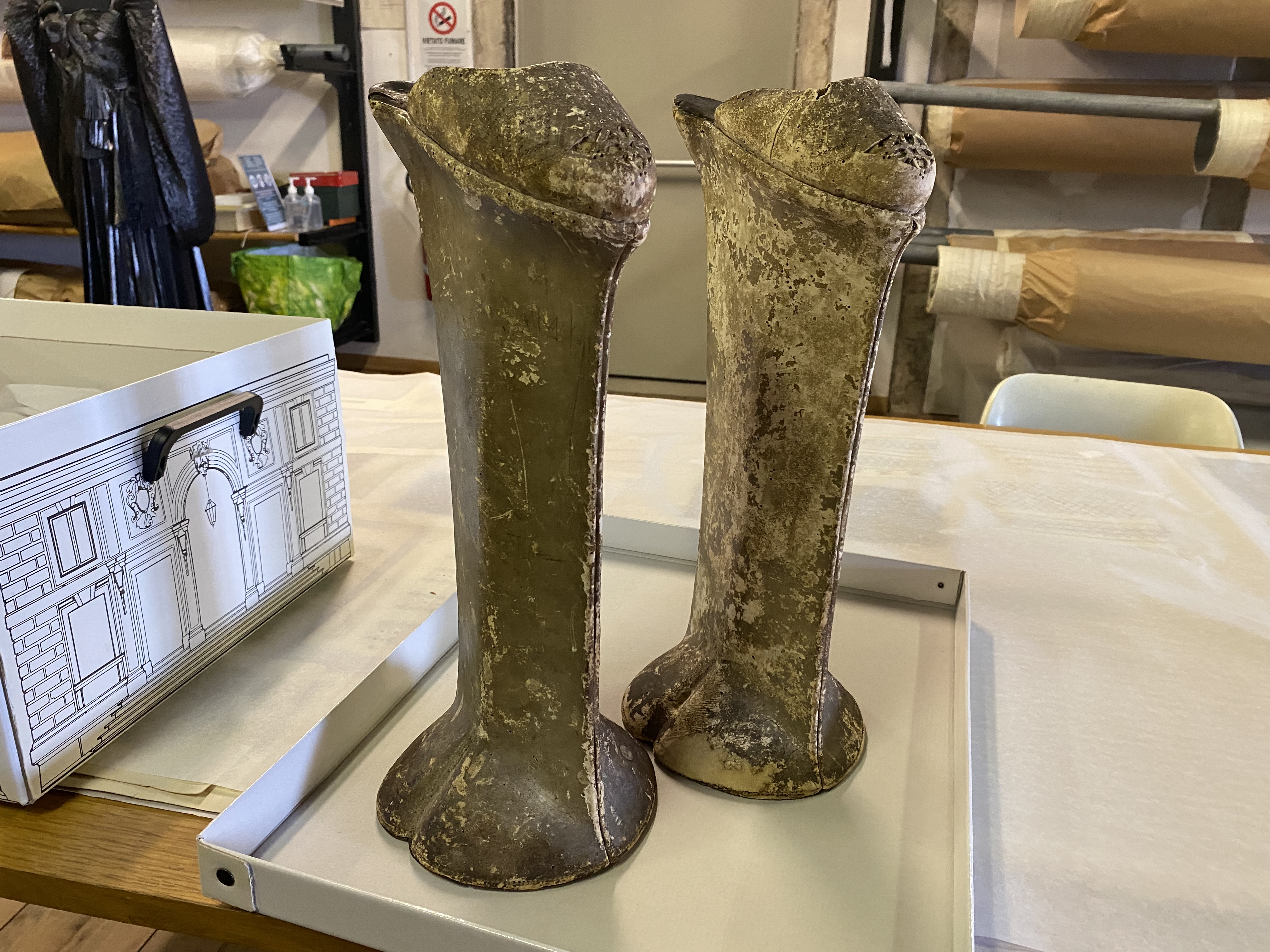Venice, 19 December 2022 – Not only to avoid the phenomenon of high water and to dirty one’s clothes with mud, but also to restrict women’s freedom of movement. For over two centuries, the “calcagnini” o “calcagnèti” have been the most popular footwear in Venice and were a statement piece in Venetian ladies’ wardrobes, attracting the attention of foreigners.
The main feature of these shoes – which resembled stilts – lay in their height, lifting the feet from the ground of many centimetres, up to over half a meter. Certainly, Venetian women were not able to move gracefully: having no stability at all, they could hardly walk alone on the streets and bridges of the city. For this reason, strolling around the city required the help of two servants supporting the lady.
At the time when the vogue of such unique footwear spread, in the eyes of the whole world the Serenissima Republic was the centre of commerce and of great wealth. Wearing these shoes was a way to flaunt and identify the social class to which noblewomen belonged: the higher the wedge, the more important the Venetian lady, because it took a lot more cloth for the skirt to get to the ground.
The reason behind this uncomfortable fashion, in vogue since the 15th century among the noblewomen of the Serenissima, was social custom: the height of this type of footwear discouraged women to leave their homes or, at least, to go around too much so that husbands and fathers could count on greater domestic tranquillity.
Embellished with brocades, gold and gems, these troublesome shoes were also widely used by courtesans and prostitutes, and were turned into weapons of seduction. In short, the “calcagnini” represented a real contradiction because on the one hand they helped to safeguard the feminine virtue by limiting the freedom of movement while on the other, they appeared as an instrument of seduction used by prostitutes and courtesans.
With time, the “calcagnini” became more and more a luxury object but, given their height, it was not uncommon to witness dangerous falls, followed by serious consequences such as fractures and abortions. The public officials always went against this kind of shoes, both because they were dangerous, and because of their lavishness.
On March 2, 1430, the Major Council of the Republic of Venice decreed that these shoes should not exceed the height of ten centimetres, a provision that was intended to safeguard the physical safety of women and impose a certain modesty and morality in clothing.
Limitations to the lavishness of this footwear also came from the Senate, in 1512, and from the Magistrato alle Pompe (the magistrates who had to moderate the luxury of the Venetians,) in 1641. In truth, such prohibitive decrees had no effect on the Venetian ladies, who continued to wear the “calcagnini” disobeying all norms.
In contrast with these high wedges were the “mule” or “muléte”, light shoes without heel and buckles that in the beginning were used at home. however, between the second half of the 17th and 18th century, they became fashionable to wear on the street, embellished with refined ornaments.
Nevertheless, the “calcagnini” did not disappear and continued to be worn even in the 18th century, and one of their strongest advocates was the famous sister Angela Tarabotti.
Among the first to move away from this troublesome vogue and to start wearing more comfortable shoes were the daughters of Doge Domenico Contarini, in office from 1659 to 1675. It is said that on the occasion of a ceremony, when a foreign ambassador was praising the two girls for their beautiful shoes, a councillor of the Republic was heard saying they were “even too comfortable”, confirming that the “calcagnini” were tolerated by the government as a form of power over the freedom of movement of women.

